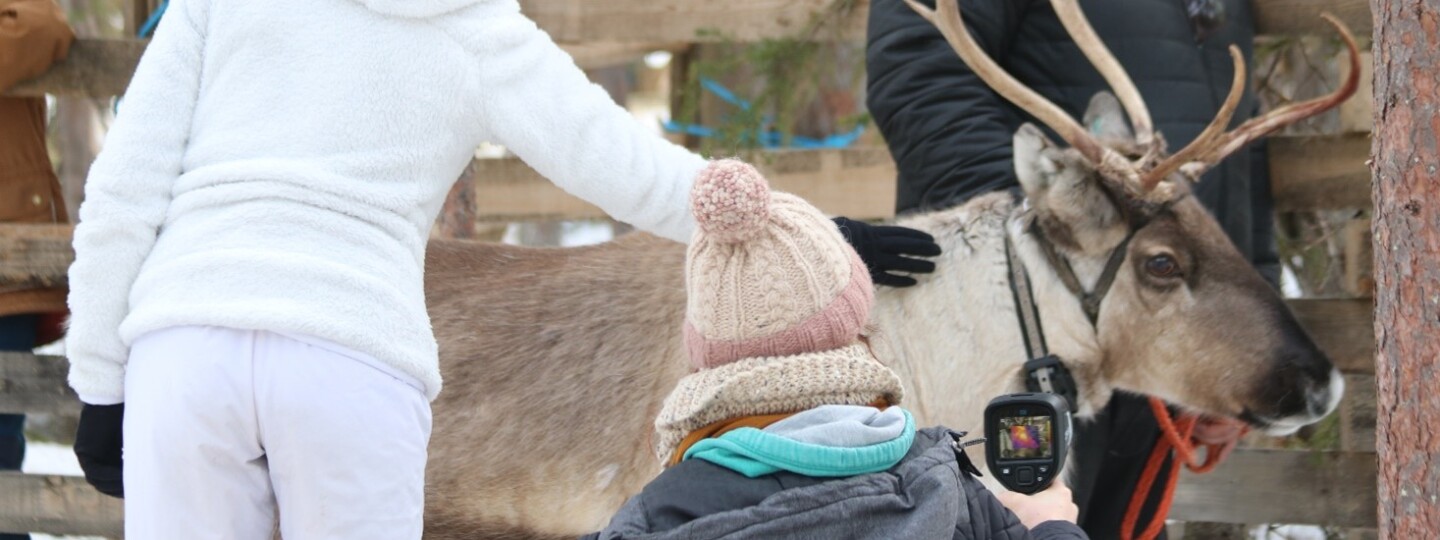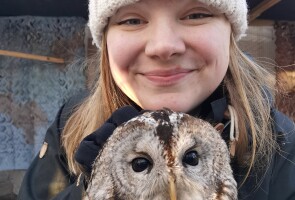An international team of researchers from the University of Turku, Finland, and the University of Tours, France, aimed to validate the use of infrared thermal imaging as a non-invasive tool for assessing stress responses in reindeer. Their findings suggest that this technology can improve the assessment of animal welfare.
Assessing stress in animals, especially in animals under human control, is important to guarantee their welfare. Infrared thermal imaging cameras have the advantage of providing thermal data without any physical contact with animals.
This is particularly beneficial because handling animals to collect physiological data—such as taking blood or saliva samples—can cause stress, which may interfere with the desired goal of gaining unbiased information on stress. By measuring physiological information from a distance, we can ensure that the handling process does not add extra stress to the animals.
When animals are faced with a stressor, their body activates responses to prepare for potential fight or escape. Blood flow is redirected to the parts of the body needed to run away, such as the legs, resulting in less blood flow in other areas, such as the nose or eyes. This shift in blood circulation causes temperature changes in those areas, which can be detected using thermal imaging cameras if they are close to the skin.
Previous research has shown that emotional stress can lead to a decrease in nose temperature in both humans and primates. These temperature changes can occur quickly, often within seconds, and may last for several minutes. This means that monitoring temperature in specific areas can indicate how stressed or aroused an animal is. Researchers have found that measuring the temperature around the eyes, which are fur-free, can be effective.
This approach provides a reliable way to assess stress in animals without the need for direct contact. This is especially important for reindeer, as they are often reluctant to be touched by humans.
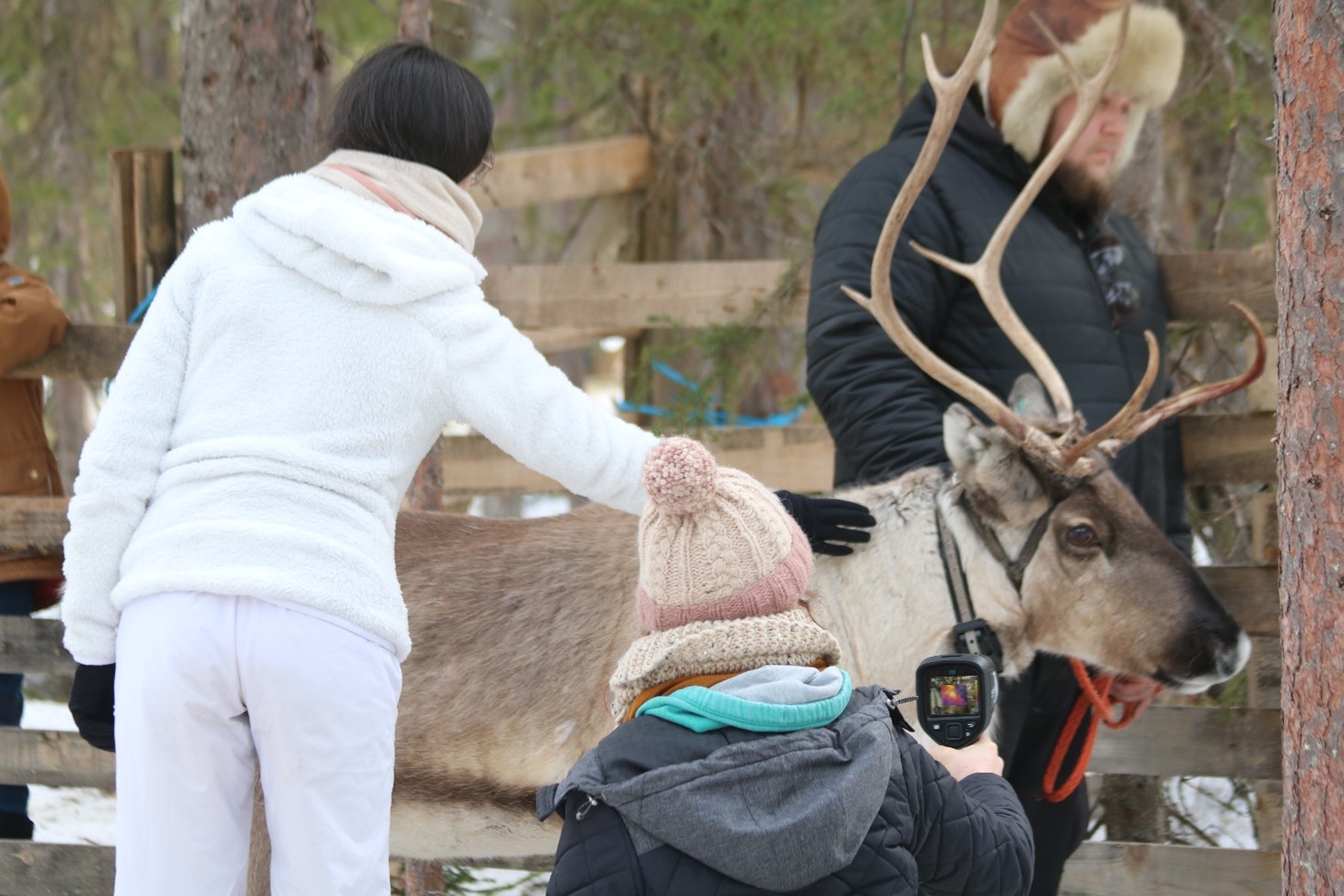
The researchers recorded the behavioural and thermal responses of the reindeer when they were petted by a stranger. Photo: Virpi Lummaa
In this study, eight male sledge reindeer used for tourism in Lapland took part in the study. These reindeer were accustomed to human presence and walking on a lead rope but were not habituated to human touch, as herders knew that their reindeer would not appreciate that.
The researchers used this opportunity to conduct an experiment and record the behavioural and thermal responses of these reindeer when they were petted by a stranger for one minute.
The experiment showed that the animals did indeed exhibit avoidance behaviours during the interaction with the stranger, trying to avoid the human touch and move themselves away. This confirmed that the petting was a stressful situation for them and a good choice of stimulus to elicit a stress response.
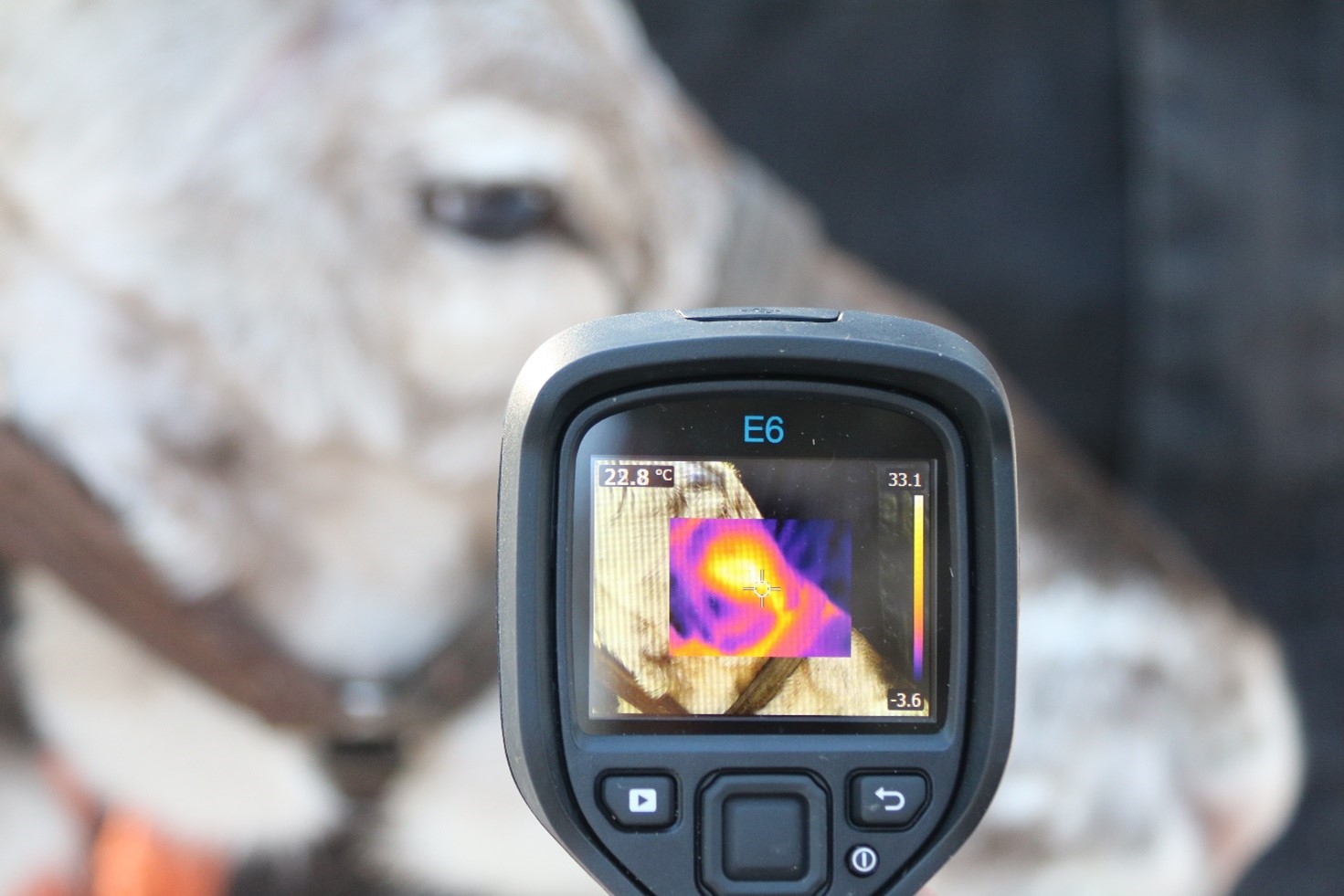
Infrared thermal imaging can detect physiological stress responses in reindeer without invasive procedures that may cause additional stress to the animal. Photo: Virpi Lummaa
The infrared thermal camera footage showed a decrease in the temperature of the eye corner of the reindeer, starting when they were petted by the stranger and followed by a gradual increase when the stranger stopped petting the animal.
"Our findings demonstrate that infrared thermal imaging can effectively capture the physiological stress responses of reindeer during human interactions. This technology allows us to monitor the emotional states of reindeer without invasive procedures, which is crucial for their welfare," says Postdoctoral Researcher Océane Liehrmann, lead researcher of the study from the University of Turku.
This research highlights the importance of using innovative technologies to enhance our understanding of animal stress and welfare.
"By validating infrared thermal imaging as a reliable assessment tool, we can improve the management and treatment of reindeer in tourism settings," continues Docent Martin Seltmann, co-author of the study from the University of Turku.
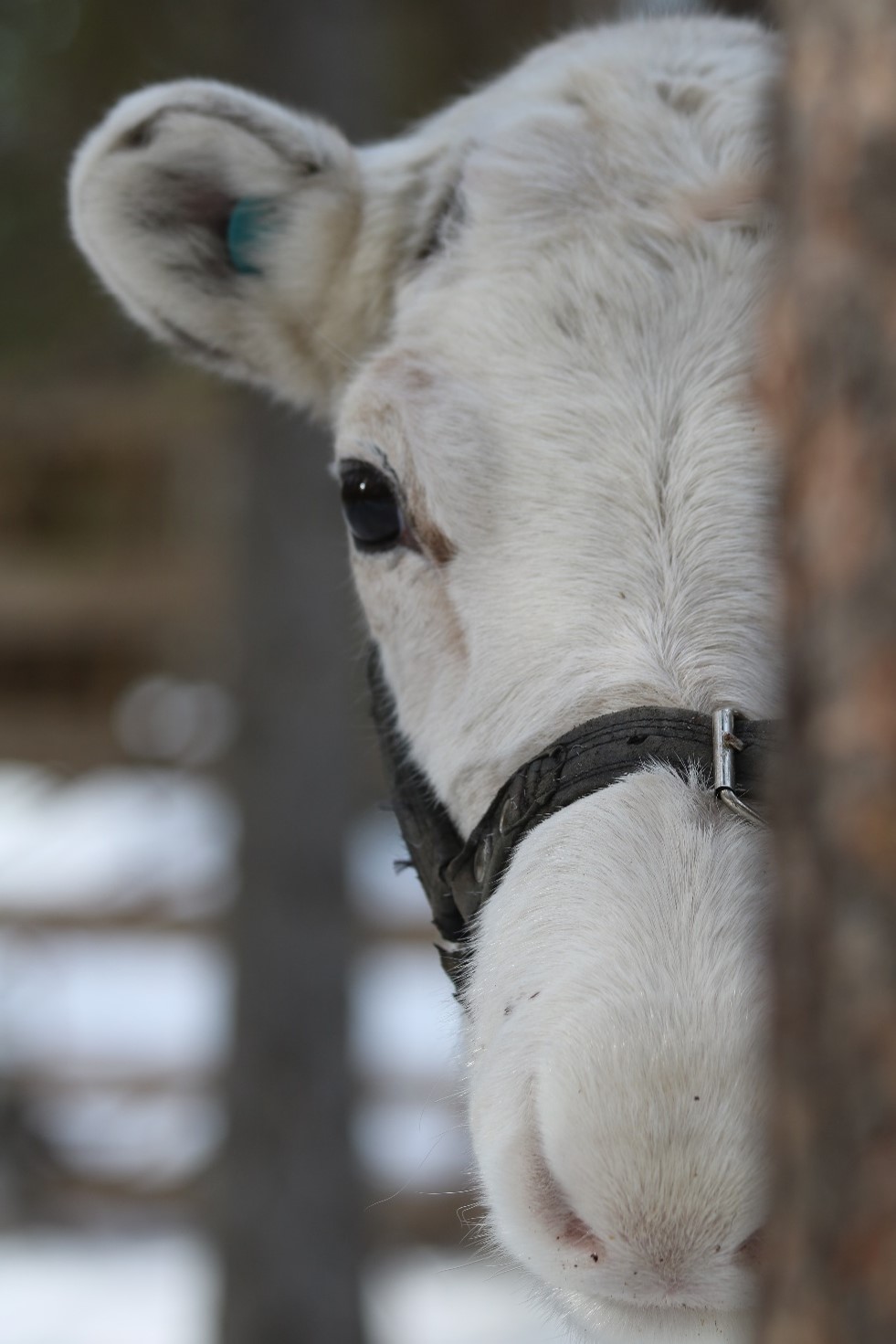
Ensuring reindeer welfare and responsible practices in animal tourism is important. Photo: Virpi Lummaa
In this publication, researchers also provide guidelines to improve the methods when using infrared thermal imaging settings in their research studies.
The implications of this study extend beyond reindeer, providing insights into the welfare assessment of other species subjected to human interactions. The findings contribute to a growing body of literature that emphasizes the need for responsible practices in animal tourism, ensuring the well-being of the animals involved. As researchers continue to explore the complex relationships between humans and animals, this study serves as a reminder of the importance of monitoring animal welfare and adapting practices to enhance the lives of reindeer and other working animals.
The article has been published in the Journal of Animal Behavior and Cognition in August.
Photos
Photo 1.: Infrared thermal imaging can detect physiological stress responses in reindeer without invasive procedures that may cause additional stress to the animal. Photo: Virpi Lummaa
Photo 2: The researchers recorded the behavioural and thermal responses of the reindeer when they were petted by a stranger. Photo: Virpi Lummaa
Photo 3: Ensuring reindeer welfare and responsible practices in animal tourism is important. Photo: Virpi Lummaa
Contact information:
Océane Liehrmann, Postdoctoral Researcher, Ecology and Evolutionary Biology, oceane.liehrmann@utu.fi, +33 65 985 9328, (English)
Martin Seltmann, Docent, Ecology and Evolutionary Biology, martin.seltmann@utu.fi, +35844 204 3454 (English, Finnish)
